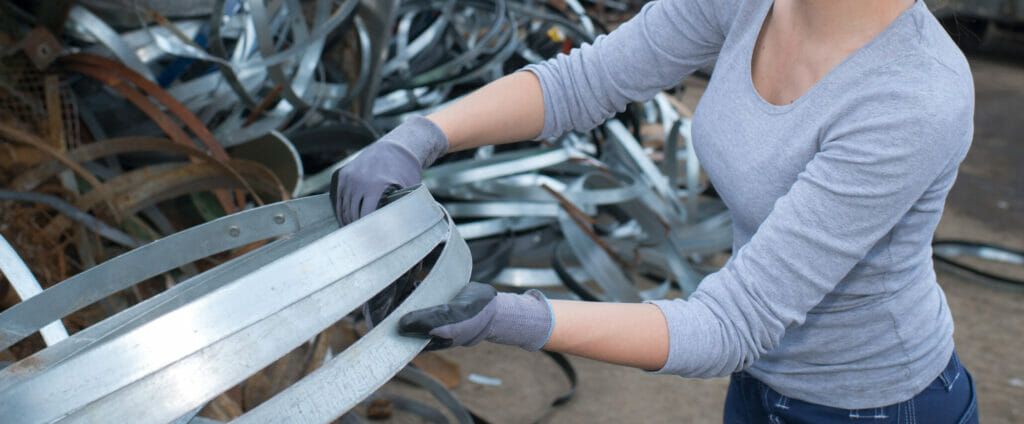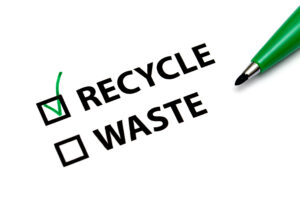Scrap Metal We Buy
Not Your Average Junkyard Scrap

There are all kinds of scrappers. Some pick up junk off the road, some take decommissioned electronics and automobiles and pick through the remains. Some, like Republic Alloys, are focused on the extremely valuable and hard to rare alloys that manufacturing facilities have left over.
It’s a win-win for manufacturing facilities that have no need for their scrap. Over time, it will build up and become a burden, and getting it to the foundries and mills that could use scrap is beyond the scope of most facilities. A scrap metal expert will take that metal free of charge and ensure it is recycled with the proper professionals. It’s a convenient service for the facility and good for the environment as well.
But what kinds of alloy and rare scrap metal does Republic Alloys handle? They include:
- Tantalum – This is an extremely rare, bluish metal that is highly resistant to corrosion and is chemically inert. It is used in the medical and electronics industries, and is also a popular options for alloying.
- Niobium – Similar to tantalum and also extremely rare, niobium is a soft, grey metal that is nonetheless robust in high temperature settings. Its durability is such that alloys made up of just 0.1 percent of niobium are much more stable in high temperature and pressure applications. This is why the metal is found in spacecraft and superconductors.
- Hastealloy – Hastealloy refers to more than 20 different alloys, and is always comprised of nickel and several other metals, depending on the particular alloy. These additional metals include copper, iron, aluminum, carbon, tungsten, titanium, chromium and molybdenum among others. It is used in the oil & gas, pharmaceutical and medical industries, due to its high performance.
- Inconel – A mix of nickel, iron, chromium and several trace metals, Inconel is a high performance alloy that is resistant to both high temperatures and pressures. It is found in gas turbines, heat exchangers, and several welding applications.
- Haynes – Haynes is a combination of primarily nickel and cobalt, and is prized for its weldability properties. It is a common choice in the metalworking, automotive, ceramics and aerospace industries, where it is incorporated into rocket engines.
- Rene – Another nickel-based alloy, Rene is known for its corrosion resistance and its compatibility with many fabrication processes. It is found in a variety of springs and bolts, and is also a standard choice in missile components.
- Monel – Monel is made up of about 70 percent nickel and anywhere from 20 to 30 percent copper. Trace compounds include iron and manganese, among others. It is more durable than steel and is highly workable, with malleable qualities. It is found in marine applications, and is also a common choice for musical instruments.
- Waspaloy – Yet another high performance nickel alloy, Waspaloy maintains its integrity even at temperatures as high as 1,800 degrees Fahrenheit. It is also resistant to corrosion and is nearly unaffected by oxidation. As such, it is found in a variety of hardware applications, as well as seals, compressors and other engine components.
The Benefits of Metal Scrapping
First and foremost, handling tons of metal scrap is difficult and a major drain on resources. Over time, this scrap collects in areas it shouldn’t go and may negatively impact the perception of a home or business. A scrapper offers a clear, concise solution to this problem by showing up with the means to remove the metal scrap quickly and easily. And because the process benefits the scrapper as well, companies can take advantage of a scrapper’s skill and industriousness to get rid of the metal they don’t want or need.
A scrapper provides an invaluable service in preparing the scrap for the next step in the recycling process. This includes removing and sorting all the types of metal that the scrap is composed of. Without a scrapper’s help in this regard, processing the metal can be a time consuming, labor intensive job that businesses rarely have time to engage in.
Hazards of Scrap
Still, it goes beyond mere convenience, as removing scrap can be a dangerous task that should only be left to trained and experienced professionals. Consider the hazards that scrappers may face on a daily basis:
- Physical injury. Metal scrap is heavy and sharp, which exposes the handler to severe contusions and lacerations (which are at a high risk of infection). The machinery required to process scrap is dangerous as well, as it must be able to cut through and lift huge amounts of metal. For example, alligator shears are used to slice through piles of scrap, but they can also chew through an operator’s hand if the operator doesn’t have the proper experience in handling the machine.
- Some devices, such as medical devices that rely on radiotherapy, contain highly radioactive substances like cesium. Even standing near these devices without observing the proper protocols can result in severe medical complications. Attempting to process scrap that contains radioactive material is extremely dangerous without the right equipment and technique, and can be fatal. There have been several instances of people suffering major, even fatal, radiation poisoning while attempting to break down scrap.
- While metals are only occasionally toxic, the materials that surround them are often problematic. For instance, asbestos is found as an insulating material in residential and commercial buildings, and is highly dangerous if agitated and then inhaled. Several metals are toxic to the touch as well, including mercury, cadmium and beryllium.
The Environmental Impact

Economics and safety are important factors in metal recycling, but the environmental benefits might be the most impressive. Recycling metal saves a great deal of energy and also reduces the need for extensive ore mining. According to the Environmental Protection Agency, these are the benefits of recycling iron scrap instead of using new iron ore:
- Scrap metal reduces the raw material cost of producing iron products by 90 percent.
- Converting scrap to new iron products requires 75 percent less energy than if new iron ore was being used instead.
- Because much less energy is required when working with scrap, using scrap reduces air pollution output by 86 percent.
- 40 percent less water is needed to turn scrap iron into usable metal, when compared to using virgin ore.
- Less water usage also means less water pollution. Specifically, it means 76 percent less water pollution.
- Mining wastes are dramatically lowered, up to 97 percent in some cases.
Consider steel as well. For every ton of steel produced from scrap, this saves:
- About a half ton of iron ore.
- More than 600 kilograms of coal, which greatly lowers air pollution.
- A little more than 50 kilograms of limestone.
Other metals can also be produced much more efficiently from scrap. These metals include:
- Aluminum – a 95 percent reduction in energy usage.
- Copper – an 85 percent reduction in energy usage.
- Lead – a 65 percent reduction in energy usage.
- Zinc – a 60 percent reduction in energy usage
Scrap metal, due to its shape and composition, can be melted at lower temperatures, which is where metal producers save most of their energy
But where does all that new metal go once it is created? Really, it could be integrated into any project or product. Recycled metal provides the same level of strength and durability that virgin metals provide, as they are chemically identical. Here are some examples of recycled metal applications.
- Large scale construction projects, including bridges. Recycled steel is particularly common in construction projects.
- Automobile and airplane construction. Recycled aluminum is found in most new vehicles and planes.
- Appliances and plumbing. Recycled copper and brass are major elements of new appliances and plumbing piping and valves.
- Recycled copper makes up a great deal of wiring in electronics and in buildings.
- Recycled aluminum cans, for example, are a much more energy efficient option when compared to new aluminum cans.
- Home furnishings. A variety of recycled metals can be used in home furnishings, including tables, lamps and benches.
- For many artists, scrap metal holds its own kind of beauty and can make for an impressive display.
Scrapping is critical to preserving the world’s resources and for providing an outlet for businesses building up metal waste.
